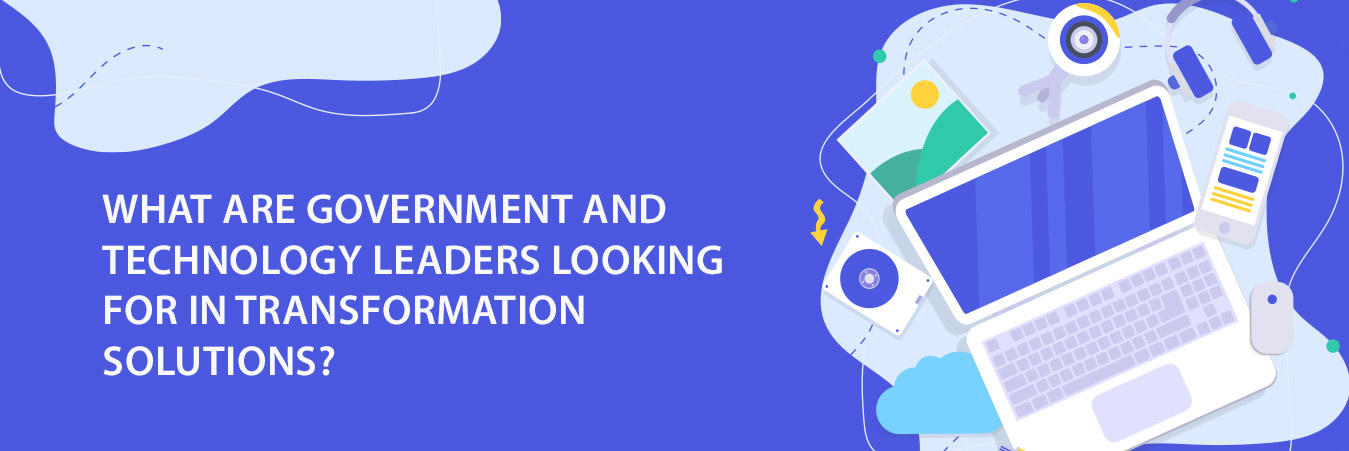What are government leaders looking for in transformation solutions?

Is Your AI and Automation Strategy Right for You?
December 4th saw a celebration of low-code accomplishments and the growing adoption of the Appian platform at Appian PUBLIC SECTOR 19. Speakers from various public sector organisations discussed how low-code platforms are modernising and improving different processes. Appian CEO Matt Calkins and CTO Mike Beckley were also in attendance to provide talks on the future of low-code and intelligent automation.
A total of eight breakout sessions took place in the exhibition hall allowing Appian and partners (including Convedo) to present new public sector applications and technology demonstrations. Having taken in a huge amount of information from various sources, what are the key points to take away from Appian PUBLIC SECTOR 19.
Projections for growth in digital transformation are at an all-time high with investment in the industry reaching the trillions. The below snippet from the IDC's top 10 predictions for digital transformation in 2020 shows just that.
"Direct digital transformation (DX) investment is growing., with a compound annual growth rate (CAGR) of 17.5% from 2020 to 2023 and is expected to approach $7.1 trillion as companies build on existing strategies and investments. Organisations with new digital business models at their core are successfully competing in the digital platform economy," according to Shawn Fitzgerald, research director, Worldwide Digital Transformation Strategies. "Our 2020 digital transformation predictions represent continued thought-leading perspectives on the emergent trends we see through 2025."
At Appian PUBLIC SECTOR 19 it was clear just how much progress is being made in such a short period of time and what plans were being put in place for the future development. The three primary objectives of the executive leadership at Appian:
- Move to scalable cloud-based workflow platforms that include reusable components
- Enable Offices to use agile practices to ensure the efficient building of technology.
- Provide consistency across a complex structure that can manage multiple implementations in multiple environments for various contractors and technical organisations
The first key area that held heavy focus at the Appain event was the 'move to scalable cloud-based workflow platforms with reusable components.
The first example saw the in-depth explanation of Enterprise Transformation at FDA CDER. Ranjit Thomas, Director at the Food and Drug Administration (FDA) shared the accomplishments and challenges of adopting new technologies. Ranjit continued to explain how Workflow Management is a core capability for CDER and a high priority for the FDA in managing a 300% increase in submissions. To modernise and accelerate the FDA's drug review and approval processes, using the Appian low-code platform alongside the CDER's Workflow Management PMO is critical.
Moving on through the event, low-code continued to provide a platform for discussion and debate. Jason Adolf (Appian Industry Vice President) led a panel session with a number of digital transformation leaders that had implemented enterprise low-code platforms within their organisations. Jason William Glavich (MCRISS Program Manager) for the US Marines described how using a low-code platform, and agile development had helped the organisation in building and rolling out recruitment programs. By providing all the tools necessary to the recruiters, Appian's low-code platform enabled the process to run much more efficiently.
Alongside Jason was Samir Mehta, Technology Delivery and Operations Director at the National Oceanic and Atmospheric Administration (NOAA). Samir contributed to the panel discussion by describing how his team designed and developed a cloud-based mission system, using the Appian platform. Taking just 120 days to create, the operation aimed to engage users at an early stage in order to better serve citizens and businesses. Samir and his team at the NOAA are now looking to add an RPA solution to change the way the agency's application process works.
A final key outtake from the panel discussion came from Tim Doyle, Senior Vice President at Conference of State Bank Supervisors (CSBS). Tim advised how enterprise low-code platform could help increase CSBS engagement and feedback from state regulators. By using an Appian platform, CSBS is developing a new State Examination System (SES) to support 69 state regulatory agencies with just under 80,000 users.
As Appian PUBLIC SECTOR 19 drew to a close, the focus switched to the future of low-code with closing views from Matt Calkins and Mike Beckley. Both spoke in-depth regarding growth predictions as well as the challenges Appian will face in the coming years.
Matt cited a Gartner prediction that 65% of new applications will be developed with low-code application platforms by 2024 with a number of federal agencies accelerating their progress in adopting low-code. Matt did suggest, however, that Appian must understand that management of a changing workforce with RPA and AI is crucial in implementing low-code platforms. Mike Beckley echoed much of the positive outcomes Appian's low-code platform had provided by adding the level of trust they now have from organisations such as the US Treasury and Air Force. Mike also expanded and outline how the Appian platform currently supports more than 5.4 million users as well as the processing of an average of 1.5 billion transactions a day.

